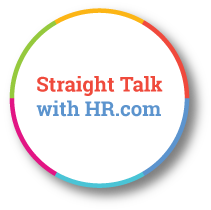From Gig Workers To Overtime: What Every Employer Must Get Right In 2025
Exclusive interview with Sarah Wieselthier, Erica G. Wilson, Patrick M. Dalin, and James F. Glunt, Partners, Wage and Hour Practice Group, Fisher Phillips LLP
Posted on 05-05-2025, Read Time: 6 Min
Share:

    |
With growing scrutiny around employee classification, overtime pay, and contractor relationships, wage and hour compliance remains one of the most challenging legal areas for employers. In this interview, four partners from Fisher Phillips LLP’s Wage and Hour Practice Group, Sarah Wieselthier, Erica G. Wilson, Patrick M. Dalin, and James F. Glunt, share insights on key compliance issues for 2025, including exemption errors, gig economy regulations, multi-state requirements, and the use of technology in timekeeping and payroll. The attorneys discuss how employers can prevent frequent and costly wage and hour errors while improving workplace compliance in 2025 and beyond. |

Excerpts from the interview:
Q: What are the most pressing wage and hour compliance challenges facing employers in 2025?
Sarah: One of the biggest challenges facing employers today is the misclassification of employees either as exempt or as independent contractors. The default under the federal Fair Labor Standards Act (FLSA) is that an individual is non-exempt and an employee (as opposed to a contractor), and it is the employer’s burden to demonstrate otherwise. With respect to exemption misclassification, often, employees who work in more white-collar, professional environments are compensated on a salary basis and classified as exempt despite their duties not meeting the requirements of a recognized exemption under federal or state law.
Additionally, with respect to independent contractors, each jurisdiction has its own test to determine whether an individual is truly an independent contractor. What matters is not the existence of an independent contractor agreement but the functional reality of the position and what level of control the company has over the work being performed. Misclassification errors can be costly, and it is important for employers to ensure that all workers (or contractors) are appropriately classified.
Additionally, with respect to independent contractors, each jurisdiction has its own test to determine whether an individual is truly an independent contractor. What matters is not the existence of an independent contractor agreement but the functional reality of the position and what level of control the company has over the work being performed. Misclassification errors can be costly, and it is important for employers to ensure that all workers (or contractors) are appropriately classified.
Q: How should organizations navigate the evolving landscape of independent contractor classification and gig economy regulations?
James: Employers who supplement their employee workforce with a non-employee contractor workforce should know that doing so is legal and can make good business sense. To minimize the risk of a misclassification challenge, it is best to limit the engagement of any particular contractor to something less than what would be considered “full-time” as an employee.
That way, the contractor has the capacity to take on additional gigs. Other best practices include paying by the project or gig, requiring a business-to-business engagement, and providing the contractor with as much freedom over means and methods as is feasible.
That way, the contractor has the capacity to take on additional gigs. Other best practices include paying by the project or gig, requiring a business-to-business engagement, and providing the contractor with as much freedom over means and methods as is feasible.
Q: What key strategies can employers implement to minimize legal risks in multi-state and global wage and hour compliance?
Sarah: Wage and hour compliance can be challenging for multi-state employers because many states have specific wage and hour laws that go beyond the federal FLSA—whether it is a higher minimum wage rate, different exemption categories, additional recordkeeping and notice obligations, or additional premium payments.
It is important for key decision-makers to be trained on the wage and hour requirements in each state and partner with legal professionals who can provide guidance on multi-state compliance issues. Fisher Phillips’ website also has multi-state wage and hour maps, which provide an overview of state laws on key compliance topics, and they are available here.
It is important for key decision-makers to be trained on the wage and hour requirements in each state and partner with legal professionals who can provide guidance on multi-state compliance issues. Fisher Phillips’ website also has multi-state wage and hour maps, which provide an overview of state laws on key compliance topics, and they are available here.
Q: How are recent court rulings shaping overtime pay, employee misclassification, and wage transparency laws?
Sarah: Recently, there have been several influential court decisions impacting wage and hour laws. For example, the Supreme Court issued a ruling clarifying the employer’s burden of proof to demonstrate that an employee is properly classified as exempt under the FLSA. In response to a split among the circuit courts, the Supreme Court clarified that employers need to demonstrate an exemption by a preponderance of the evidence rather than a stricter standard, which may make it easier to defend against misclassification claims. Additionally, a federal District Court in Texas put a halt to the significant increases to the salary threshold for the white-collar exemptions under the FLSA. These court rulings have a direct impact on how businesses approach compensation decisions and ensure compliance with the FLSA.
Q: What role does technology, including AI and automation, play in ensuring wage and hour compliance?
Erica: Accuracy—when used correctly, consistently, and with workplace-specific nuances in mind. Contemporaneous electronic timekeeping, automatic calculation of hours worked, and programmed pay rate rules minimize the risks inherent to manual systems. Integrated software saves time as compared to, say, two systems that cannot “talk” to each other without someone manually exporting/importing time data every pay period.
But just because you are using software, however fancy, does not mean it is error or risk-free. Rounding rules are common but pose a litigation risk in certain jurisdictions; regular rate calculations are often misunderstood; and the logic of a payroll rule might turn out to be flawed, but only so occasionally that it flies under the radar. But in my experience, even imperfect technology for timekeeping and payroll is still better than handwritten time sheets and someone with a calculator (ask me how I know).
But just because you are using software, however fancy, does not mean it is error or risk-free. Rounding rules are common but pose a litigation risk in certain jurisdictions; regular rate calculations are often misunderstood; and the logic of a payroll rule might turn out to be flawed, but only so occasionally that it flies under the radar. But in my experience, even imperfect technology for timekeeping and payroll is still better than handwritten time sheets and someone with a calculator (ask me how I know).
Q: What proactive steps should employers take to prepare for potential wage and hour audits and litigation trends?
Dalin: Employers should pay close attention to legal alerts from their outside counsel, as these will flag important changes in the law and the latest litigation trends. Wage and hour lawsuits or government audits can be very costly because they can be pursued on a class or collective basis, and there is often the obligation to pay the plaintiffs’ attorney’s fees and costs. I always recommend that employers be proactive and periodically audit their timekeeping and payroll practices, as well as other impactful issues such as exemption classifications and independent contractor arrangements.
The best defense is compliance in advance. To prepare for a government audit, employers should have a pre-designated team to handle the matter. Oftentimes, this will include an outside counsel who can handle communications with the government auditors. It is also best to have an internal team with designated assignments (i.e., document collection and review, manager interviews and communications) so that these matters are handled quickly and effectively in what is often a fast-moving matter.
The best defense is compliance in advance. To prepare for a government audit, employers should have a pre-designated team to handle the matter. Oftentimes, this will include an outside counsel who can handle communications with the government auditors. It is also best to have an internal team with designated assignments (i.e., document collection and review, manager interviews and communications) so that these matters are handled quickly and effectively in what is often a fast-moving matter.
Error: No such template "/CustomCode/topleader/category"!
